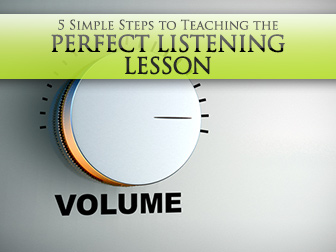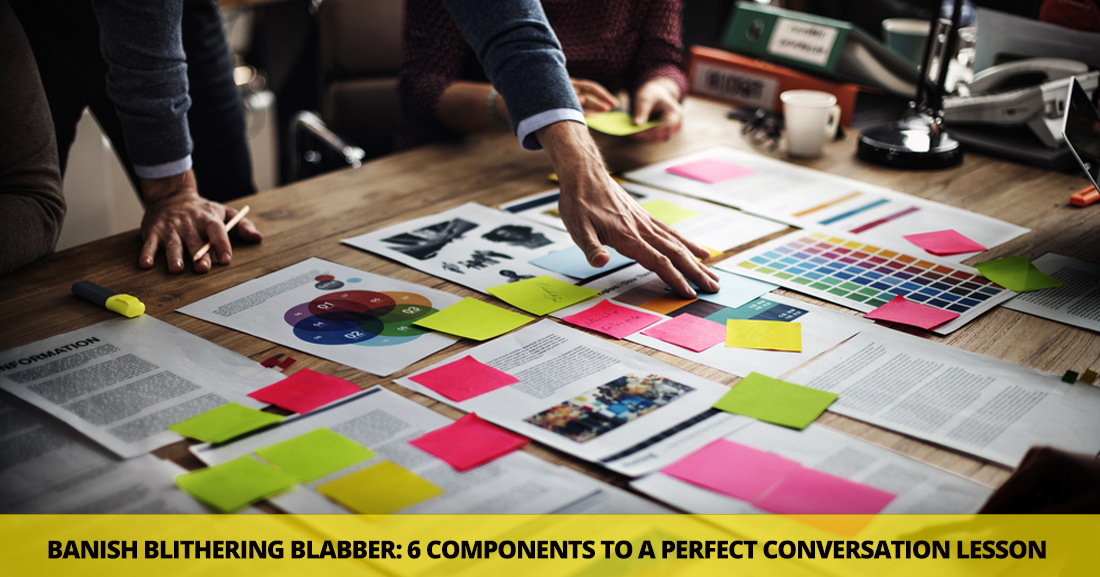5 Simple Steps to Teaching the Perfect Listening Lesson


It doesn’t happen often, but it does happen. And perhaps the most challenging ESL class to feel good about is conversation class. How do you know if students really got the point of the lesson? If they really completed it successfully? If was just a bunch of people talking. Thankfully there are steps you can take to make sure your chances at success are higher than average. And there are specific components you’ll need to make your conversation lesson the best it can be. Here are five must-have elements for a successful conversation lesson.
What do you hope to accomplish in your lesson? What do you want your students to do while they talk or be able to do after the discussion is over? If you aren’t sure where you are going with your conversation lesson, you will never know if you have gotten there. Think about the purpose of your lesson. Know ahead of time whether your students will learn or practice a particular grammar structure, use key vocabulary, or work on their general communication skills. If you know your goal, you will also know if and when your students have reached it.
Picture yourself. You are sitting across from an acquaintance and they are going on and on about their great internal conflict about switching brands of toothpaste. Aim tastes better, but Crest gives you a cleaner feeling. Are you rolling your eyes yet? That’s because this conversation topic isn’t relevant to you. You aren’t interested in it. For a successful conversation lesson, you need to make sure it is relevant to the lives of your students. What are they interested in? What do they like? What are their goals in learning English? Make sure that the topic of your conversation is something that your students will want to talk about and can relate to, and if you do you’ll see their engagement level go sky high.
I don’t know about you, but I can’t function in the morning without my first cup of coffee. Successful conversation activities are kind of like that, too. You may not need caffeine in your classroom, but your students will benefit from a warm up activity to get their brains going before you set out to accomplish the primary task of the day. Try playing a quick game, show a picture and have students talk about it, or share personal stories related to what you’ll be talking about the in main part of your lesson. Help them remember the vocabulary or grammatical constructions they will need to successfully complete the task you have planned. When you give them a warm up activity before the main activity, it will get their English juices flowing so the thoughts and words come easier when it really counts. And a cup of coffee can’t hurt, either.
If you have thought about the goal of your conversation lesson, you probably know whether you want your students to use a specific grammar structure, but do they know it? Have they studied it before, or is this the first time they are seeing that structure? If you are teaching or practicing a verb tense, a sentence structure, a set of vocabulary, or any other language skill, take some time before your conversation activity to teach or review that skill. If possible, go a step further and give students a very controlled exercise in which to practice this target skill, such as working with a partner to answer questions or complete a worksheet. Then when you finally get to your conversation activity, students will have had practice with that language skill and they can use the structure successfully in the conversation, without the need for immediate and detailed feedback on your part.
It may seem a little silly to point this out, but the best conversation lessons have speaking time. By that I don’t mean teacher talk time, which is what we call the instructional period of the lesson, the minutes you are up front and your students are listening to you. You want to give your students plenty of time to talk on their own. With each other. And this talk time should have some goal, some outcome they have to accomplish. This is different from your goal for the lesson. Your goal will probably be to practice some language skill. Your students’ goal in the conversation will probably be a problem they need to solve through the conversation they are having. Perhaps they will be negotiating a contract. Maybe they will be resolving a problem. They could be completing a project. No matter what their goal is, make sure they are in groups where everyone gets a chance to participate. Consider breaking your students up into groups based on level rather than putting more advanced students with struggling students. When everyone is at the same skill level, no one will be able to hide in the background and let the more comfortable speakers simply take over the conversation.
You want to make sure your students know how they did in a conversation lesson. There are different ways to give this feedback. You might choose indirect monitoring during the activity in which you listen to everyone and note the general mistakes you hear over and over. Then after the conversations take some time to review these general areas of error without pointing out specifics to individual students. You might take a more direct approach to monitoring and listen to every student, noting specific errors each person makes. You can take notes on post-it notes as you walk throughout the room then use those notes to give each student feedback in a one on one conversation or in a brief note. Or you might have a rubric in front of you when you listen in on conversations. Mark each student’s performance on the rubric, and make sure they get a copy of your standards as well as how they did or didn’t meet them in the activity.
That way you will know what you want to accomplish, you will give your students the tools to accomplish it, and you will see them reach the goal right before your eyes.